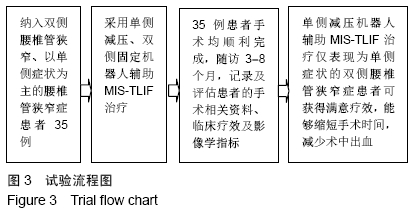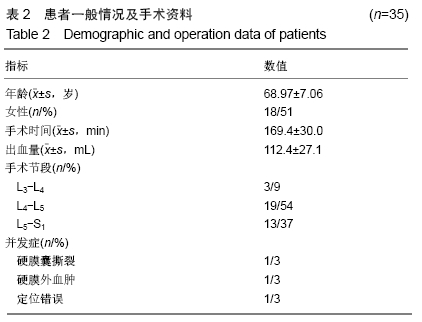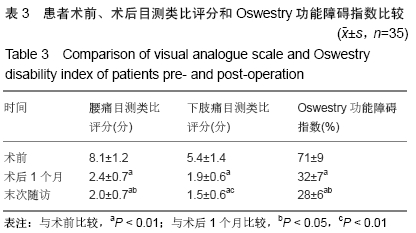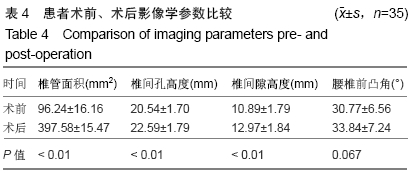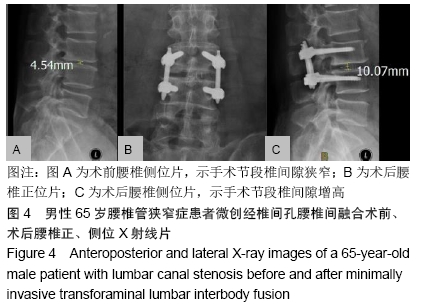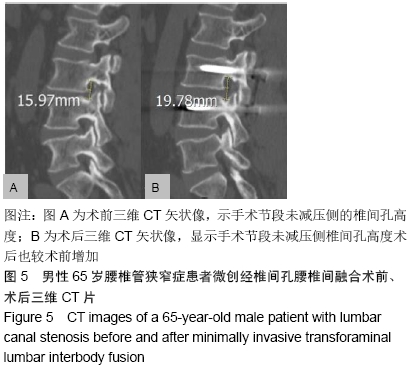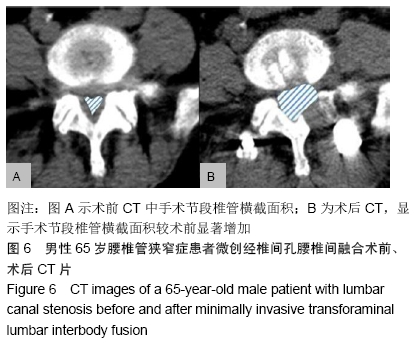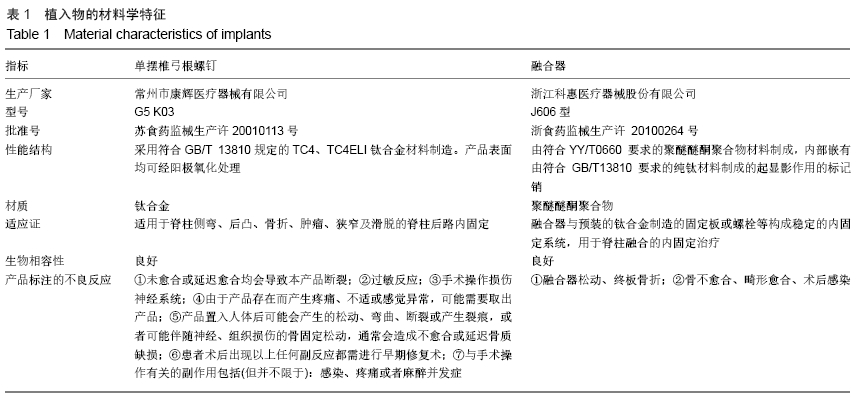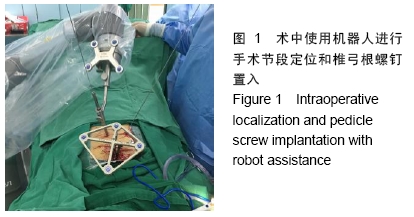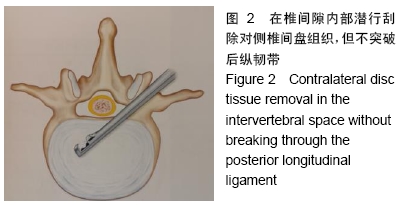中国组织工程研究 ›› 2020, Vol. 24 ›› Issue (24): 3797-3802.doi: 10.3969/j.issn.2095-4344.2720
• 数字化骨科 digital orthopedics • 上一篇 下一篇
单侧减压机器人辅助微创经椎间孔腰椎间融合治疗影像学双侧腰椎管狭窄
姜树东,任龙喜,郭 函,梁得华,张彤童,刘 正
- 清华大学附属垂杨柳医院脊柱外科,北京市 112200
Robot-assisted unilateral-decompression minimally invasive transforaminal lumbar interbody fusion for radiographic bilateral lumbar stenosis
Jiang Shudong, Ren Longxi, Guo Han, Liang Dehua, Zhang Tongtong, Liu Zheng
- Department of Spinal Surgery, Chui Yang Liu Hospital Affiliated to Tsinghua University, Beijing 112200, China
摘要:

文题释义:
微创经椎间孔腰椎间融合:2002 年Foley等首次介绍了微创经椎间孔腰椎间融合技术,相比传统开放性减压手术,具有减少组织剥离、损伤小、出血少、恢复快等诸多优点,逐渐受到腰椎管狭窄症患者的广泛青睐。通常微创经椎间孔腰椎间融合手术适应证包括腰椎管狭窄、Ⅰ-Ⅱ度腰椎滑脱、腰椎间盘突出、腰椎不稳等。文献报道采用微创经椎间孔腰椎间融合治疗双侧症状腰椎管狭窄症患者获得了满意的临床效果。
腰椎管狭窄症的症状:由于老年腰椎管狭窄症患者影像学表现几乎多为双侧狭窄,但临床多表现为一侧下肢症状,通常症状侧压迫严重,无症状侧压迫较轻。对于影像学双侧狭窄仅表现为一侧症状的腰椎管狭窄症患者,症状侧需要减压治疗,但无症状或者症状较轻的一侧是否需要减压及如何减压仍存在争议。
背景:老年退变性腰椎管狭窄症患者常见双侧神经根管狭窄仅表现为一侧症状,对于无症状或者症状较轻的一侧是否需要减压、如何实施减压手术仍存在争议。
目的:回顾性分析双侧腰椎管狭窄但仅有单侧症状且只行单侧入路机器人辅助微创经椎间孔腰椎间融合的病例,比较术前、术后的临床减压效果及影像学变化,分析单侧减压的安全性和有效性。
方法:回顾分析同一治疗组采用机器人辅助完成微创经椎间孔腰椎间融合治疗的腰椎管狭窄病例,特点是影像学表现为双侧狭窄,但仅表现为单侧症状,仅行症状侧单侧减压、椎间融合双侧固定。记录手术时间、术中出血量、手术并发症发生情况;测量术前、术后椎管横截面积、椎间孔高度、椎间隙高度、腰椎生理前凸角等;术前、术后采用目测类比评分分别对腰痛及下肢痛进行评估;采用Oswestry功能障碍指数评估腰椎功能;术后末次随访时采用Macnab标准评价疗效。
结果与结论:①患者手术时间110-235 min,平均169.4 min;术中出血量70-180 mL,平均112.4 mL;②随访3-8个月,患者术后1个月及末次随访时的腰痛、下肢痛目测类比评分均显著低于术前(P均<0.01);③患者术后1个月及末次随访时的Oswestry功能障碍指数均显著低于术前(P均<0.01);④末次随访采用Macnab标准评价临床效果,其中优15例,良17例,可3例,优良率为91%;⑤患者术后椎管面积、椎间孔高度及椎间隙高度均较术前明显增大,差异有显著性意义(P均<0.01);腰椎前凸角较术前有所增大,但差异无显著性意义(P > 0.05);⑥提示采用单侧减压机器人辅助微创经椎间孔腰椎间融合治疗仅表现为单侧症状的双侧腰椎管狭窄症患者,可获得满意疗效。
ORCID: 0000-0002-1798-8532(姜树东)
中国组织工程研究杂志出版内容重点:人工关节;骨植入物;脊柱;骨折;内固定;数字化骨科;组织工程
中图分类号:
